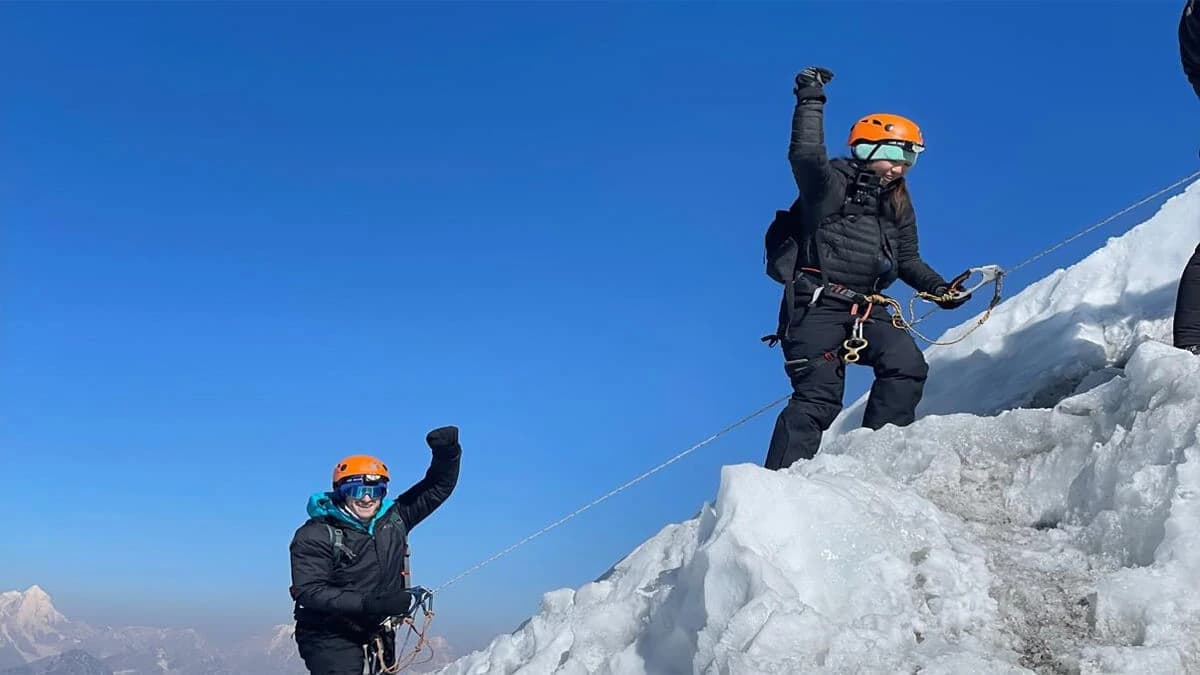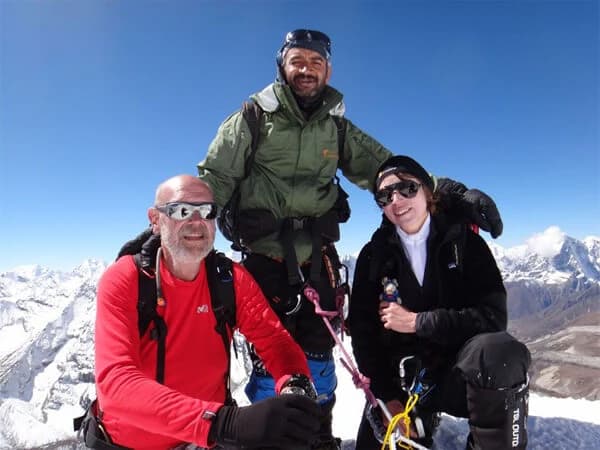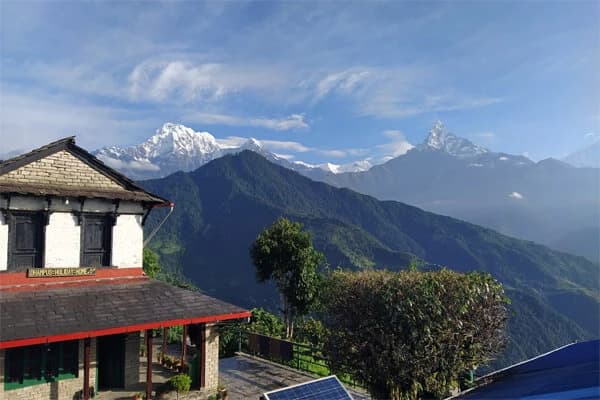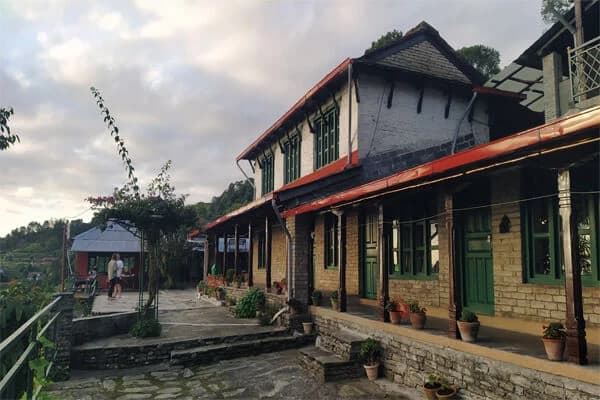In Nepal, Island Peak Climbing is a well-liked adventure. Typically, each person's total expenses range from $1,900 to $3,500. This cost covers the trip to Lukla, climbing equipment, food, hotel, permits, a guide, and a porter. You can save money by renting equipment rather than purchasing it. It is less expensive to take a group trip than to hire a solo guide. Additionally, you might need additional cash for tips, hot baths, and snacks. Depending on your travel preferences and the season, the cost may vary. It is a significant journey, but the breathtaking vistas might make it worth every penny if you plan beforehand!
How Much does it cost for Island Peak Climbing?
Island Peak Climbing Cost ranges from some basics to miscellaneous expenses. A peak climber requires knowing these particulars and their average cost before planning an Island Peak expedition. Particularly, the cost to climb Island Peak includes the cost of permits, accommodation, food and beverage, transportation, porters and guides, climbing gears, and some additional expenses.
Climbing Island Peak is of course a thrilling experience as it gives you a lifelong memory of peak climbing in Nepal. Also called Imja Tse, Island Peak elevation is just 6,189m and it stands in the middle of Imja Lake.
Island Peak is said to be one of the most beautiful peaks of the Everest Region. Its beauty and challenge to climb attract a large number of peak climbers in Nepal every year. Situated at the proximity of the Khumbu Icefall and the Khumbu Glacier, it is the busiest trekking peak of the Khumbu Region.
As soon as one thinks of peak climbing in Nepal, one comes to think of this peak. This blog aims at responding to your question about Island Peak Climbing Cost in detail. As a whole, this Island Peak Climbing Cost blog discusses the following topics:
Island Peak Climbing Permit Cost
Besides the TIMS card, there is Local Area Permit Cost and Island Peak Climbing Permit Cost as well. Local Area Permit Cost is USD 20 plus an extra 13% VAT for the international tourists doing the Everest Region Trekking.
The Nepal Mountaineering Association (NMA) is responsible for determining the peak climbing cost in Nepal. The NMA has fixed different Island Peak Climbing Permit Costs in different seasons of the year. To mention the permit cost in the table:
| S.N. | Season | Cost |
| 1 | Spring (March-May) | USD 350 |
| 2 | Summer (June-August) | USD 175 |
| 3 | Autumn (September –November) | USD 175 |
| 4 | Winter (December-February) | USD 175 |
Other Permits and Costs
| S.N | Type of Permit | Fee |
| 1 | Local Area Permit | NPR 3000 |
| 2 | Sagarmatha National Park Entry Permit (SAARC Nationals) | NPR 1500 |
| 3 | Sagarmatha National Park Entry Permit (Foreign Nationals) | NPR 3000 |
Route Based Cost for Peak Climbing
Route-based cost ofIsland Peak Climbing refers to whether you want to do this trip with Everest Base camp Trek or only this. If you combine ABC Trek with Island Peak Climbing itinerary becomes longer, so the cost is also higher. On the other hand, if you want to do only Island Peak Climbing, then the itinerary becomes short, so the cost is also lower.
However, you have a couple of options to do. If you are an experienced climber and have already climbed a trekking peak or EBC Trek, you can climb Island Peak only. On the contrary, if you are a beginner, you had better combine Island Peak climbing with Everest Base Camp Trek.
Although the cost of Island Peak Climbing goes to be a little higher, it helps you accommodate with higher altitude. You can consult with us before booking the Island Peak Climbing Trip with our company.
Accommodation Cost During the Nepal Trekking
Basically, Everest Region Trekking is completely a teahouse trekking in Nepal. But, you have to spend a few days in tents for which you need to hire a crew that has cooks, helpers, and porters including a guide.
Teahouses and lodges of the Everest Region provide you good facilities for accommodation. There are luxury hotels in the Khumbu Region to serve the national and international trekkers and climbers.
You are going to spend a few days in tents before attempting Island Peak Climbing Mission. So, we recommend you to consult with your team leader and the agency about what to carry for comfortable accommodation. Sleep well to make your Island Peak Climbing Trip more memorable.
Accommodation cost in the Himalayas goes to be a little higher than in cities like Kathmandu and Pokhara. But, we shall try our best to minimize the expenses without compromising your comfortable accommodation.
Food and Beverage Cost for Peak climbing in Nepal
As climbing a peak is a difficult and challenging task in itself, you must be careful about having hygienic food high in calories. In the Himalayas, it is not wise to have non-veg items as they might not be healthy and fresh.
Always prefer the typical Nepali daal bhaat because it gives you high energy and long-lasting strength that makes your climbing a success. As you are trekking higher, avoid alcohol and energy drinks including smoking cigarettes. This stuff may ruin your trip together with increasing Island Peak Climbing Costs. Eat food and beverage items that are high in calories and hygienic as well.
Island Peak Climbing Guides and Porters Cost
You have to bear the guides and porters cost during Island Peak Climbing trip because, without them, your ascent to Island Peak is almost impossible. During the peak climbing you have to spend a few nights at a tented camp where you need a crew as well. You need a few people to carry your food and accommodation equipment. Likewise, they are helpful in transporting your climbing gear and other luggage as well. An average porter carries from 20 to 25 kgs of luggage in the Himalayas. So, your local tour operator helps you manage the necessary number of porters and guides.
Island Peak climbing is not like other treks. You have to walk on snow and ice, and it is a true mountain trek. You will occasionally utilize an ice axe, rope, and harness. As a result, you require assistance from a qualified climbing guide or Sherpa. The guide is familiar with the mountain. They will assist you with using climbing equipment and show you the safe route. They will assist you in making the best decision in the event of inclement weather. Additionally, a guide ensures your safety when you walk on glaciers and in steep terrain. Because of this, having a climbing guide is not only beneficial but also mandated by Nepali regulations.
What Is the Price of a Guide or Sherpa?
A climbing guide or Sherpa often charges between $30 and $50 USD each day. This covers their assistance both during the ascent and occasionally during the journey. You might also need to give the Sherpa a little extra on the day of the summit in appreciation for helping you get there. It will cost an additional $20 to $25 a day if you also hire a porter to carry your bulky bag. To make the trip easier, most people hire a porter in addition to a guide. Just for the guide and porter, you should budget between $500 and $700 overall.
Island Peak Climbing Gears Cost
As Island Peak is a technical peak climbing in Nepal, you need better and more reliable climbing gears for this trip. Some of the equipment must be purchased while others can be hired. Don’t worry about the things that can be hired, our agency helps you with that.
While purchasing the equipment, always consult with your expedition operator. As an expedition operator, we assist you as much as you can to minimize Island Peak Climbing Gears Cost. This ultimately controls your Island Peak Climbing Cost.
Renting vs Buying Climbing Gear
Ropes, helmets, boots, and other special equipment are necessary for climbing Island Peak. We refer to these as climbing gear. In Kathmandu, you have the option of renting them or bringing your own. It is easier and less expensive to rent, especially if this is your first time climbing. Many stores in Kathmandu sell high-quality equipment. They will assist you in determining the appropriate fit and size. For a few dollars a day, you can rent items like crampons, a helmet, an ice axe, and a harness. For the entire trip, renting all the equipment may cost between $100 and $150.
The cost will be significantly higher if you wish to purchase your own equipment. It can cost more than $500 to buy everything. However, if they intend to climb additional mountains in the future, some people prefer to purchase equipment. It is an excellent idea to rent for your first climb.
What Gear Do You Need for Island Peak?
Island Peak is a snow-capped peak. To stay warm and safe, you need specialized equipment. Gloves, sunglasses, climbing boots, and thick clothing are among essentials. You also need crampons, an ice axe, ropes, a harness, and a helmet for the actual climb. These enable you to safely climb and walk on ice. The base camp gets extremely cold at night, so you also need a thick sleeping bag. The majority of this equipment is readily available in Kathmandu.
Island Peak Climbing Training and Preparation Costs
Walking a straightforward trail is not the same as climbing Island Peak. It is a high mountain that requires a healthy physique, strong legs, and superb balance. In order to prepare for the trip, many individuals train.
There are those who visit the gym. To strengthen their lungs and legs, they employ equipment. Some people run or hike every day. If you perform these on your own, they are free, although some individuals pay for a trainer or fitness classes. Depending on where you reside, this could cost anything from $50 to $200.
You also need to adjust to the thin mountain air before hiking Island Peak. We refer to this as acclimatization. It gives your body time to get used to using less oxygen. You do this by taking it carefully and staying up high for a few more days. Due to the requirement for food and lodging, these additional days could be more expensive.
Additionally, some people enroll in a quick climbing course in Kathmandu or close to Island Peak Base Camp. This training teaches you how to walk securely on snow, use ropes, put on crampons (ice spikes), and use a climbing harness. This type of short course might cost between $100 and $200. Therefore, there could be expenses for training and practice even before the actual climb begins. These increase your enjoyment of the trip and keep you safe.
Island Peak Climbing Transportation Costs
You must travel to the mountains from Kathmandu in order to access Island Peak. Lukla, a little hamlet with a short airport on a mountain, is where most people fly. Many trips to the Island Peaks and Everest start here. Approximately $350 to $450 per person is the cost of a flight to and from Lukla. These little aircraft transport both commodities and hikers. Bad weather might cause travel delays, so it is a good idea to factor in a few additional days.
You will require transportation from your hotel to the Kathmandu airport prior to your flight to Lukla. The cost of a car or taxi could range from $10 to $20. Some trekking companies cover this expense as part of the total package.
You will hike back to Lukla for your return flight once you have completed your ascent of Island Peak. However, some people wish to save time or are just exhausted. They decide to take a helicopter to Lukla or maybe Kathmandu from Chhukung or Island Peak Base Camp. Depending on where you travel and how many others are riding with you, this can cost anywhere from $400 to $1,000 or more.
Therefore, flights, airport rides, and possibly even a helicopter are all part of the transit for Island Peak ascent. Since they account for a significant portion of the overall travel expenses, these are crucial to plan.
Total Cost of Island Peak Climbing
Although climbing Island Peak is a thrilling experience, it is crucial to be aware of the associated costs. This aids in your travel planning. The average price per person for Island Peak Climbing is between $1,900 and $3,500. Depending on the type of travel you select, the cost may vary.
It includes everything if you purchase a comprehensive package from our trekking company. This implies that your meals, lodging, guide, equipment, permits, and flights are all covered. It is safer and simpler, particularly for those who are new to climbing. Since we handle everything and have reasonable pricing, many people pick our local business, Nepal Trekking Routes.
However, it may initially cost less if you wish to plan the trip yourself. You will need to arrange your own travel, hire a guide, rent climbing equipment, and obtain all necessary permissions. If this is your first visit to Nepal, it may be a little challenging. Always have a little extra cash on hand in case of delays or severe weather. Sometimes a minor alteration to your plan can result in higher costs.
Island Peak Climbing Itinerary
Island Peak climbing Itinerary is tailor-made with and without Everest Base Camp Trek. Thus, the itinerary turns to be different on these conditions. Likewise, the itinerary differs for novice climbers and experienced climbers as well. For a climber having previous experience of peak climbing or trekking, higher requires fewer days for preparation. On the other hand, for novice trekkers, a few more days must be added. However, the average itinerary of Island Peak Climbing.
Island Peak Climbing Itinerary can be cut off or elongate according to your need and desire. A few spare days should also be considered as sometimes the weather condition can be disturbing all of a sudden.
Imja Tse (Island) Peak Climbing Difficulty
Of course, peak climbing is a difficult but thrilling experience. A peak expedition is also not that easy but you can beat Island Peak Climbing difficulty with good preparation. Physical training and mental determination backed up by strong willpower are the key to beat the Island Peak challenges.
Altitude sickness or acute mountaineering sickness (AMS) is made Island Peak Climbing difficulty a bit more severe. The ascent to Island Peak Base Camp (5,100m) is a challenge in itself. The glacier section is perhaps the most challenging part because you need to use rope and crampons and other climbing gears to cross the headwall.
To overcome these physical challenges, you must be mentally strong and take sincere training before setting out for the Himalayas. Especially, if you are a beginner in peak climbing, you need to take every aspect of ascent and descent more sincerely.
You know sometimes your peak climbing experience may end horribly as well. So, study the route to reach the Island Peak summit properly by keeping some extra days. Be familiar with the higher altitude and the methods to overcome or prevent AMS.
Besides this, you should always care about choosing the right local tour operator that provides you a professional climbing guide, perhaps, a Sherpa! We provide you the professional Sherpa climbing guide to make your Island Peak Climbing mission a grand success.
Tips to Save Money While Climbing Island Peak
If you prepare ahead, climbing a mountain like Island Peak does not have to cost a fortune. Here are a few simple strategies to cut costs:
Participate in a Group
You can join a group with many trekking company. This implies that you pay for porters, tents, and guides jointly. Additionally, it is enjoyable since you meet new people from other nations!
Rent instead of buying
Purchasing climbing equipment such as boots, ice axes, and ropes may be very expensive. However, you can rent practically everything in Kathmandu for a nominal fee. Just make sure the equipment is secure and in good shape.
Bring your own snacks.
The cost of food at high places might be very high. You will not need to purchase additional food in the mountains if you pack chocolate bars, almonds, or instant noodles from home.
Take Tablets for Water Purification
The higher you go, the more expensive bottled water becomes. Carry a water bottle and use a filter or purification tablets instead of purchasing bottles every day. It is also more cost-effective and environmentally friendly.
Book with a Local Organization
Large international corporations frequently charge more. Our, local Nepali business, Nepal Trekking Routes, is familiar with the terrain, offer reasonable costs, and support the community by generating employment. You may also help the Nepali economy!
You may enjoy this incredible climb without breaking the bank if you prepare ahead of time and make wise decisions. Your memories will be worth every penny, and Island Peak is a stunning mountain!
Some of Frequently Asked Question
What is the price of the Island Peak climb?
Typically, each person's total expenses range from $1,900 to $3,500. This covers your domestic flights, permits, food, accommodation, trekking guide, and climbing guide.
Which permits are required?
Three permits are required:
- Sagarmatha National Park Permit (about $30)
- Island Peak Climbing Permit (around $250 in spring)
- Local Permit for Khumbu (about $20)
- Depending on the season, their combined price ranges from $120 to $300.
Does the equipment come with the Island Peak Climbing package?
Not all the time. Renting Peak climbing equipment, such as boots, crampons, a helmet, and an ice axe, may be necessary. The cost of renting is between $100 and $200.
Can a group of people save money?
Yes. Joining a group entails splitting expenses, such as porters and the guide. Numerous hiking businesses provide reasonably priced group packages.
Are there any other fees?
Yes. For hot baths, tips, refreshments, and battery charging, bring additional cash. For personal needs, you should have between $100 and $200 on hand.
Conclusion: Island Peak climbing Cost
Island Peak Climbing is a challenging but thrilling experience for both the novice and the experienced climbers. Always choose a caring agency that provides you the best professional guide and porters. Your safety and successful accomplishment of your Island Peak Climbing Trip is are the most important things above all. Before planning the expedition, look into various aspects including Island Peak Climbing Cost. Thank you!







